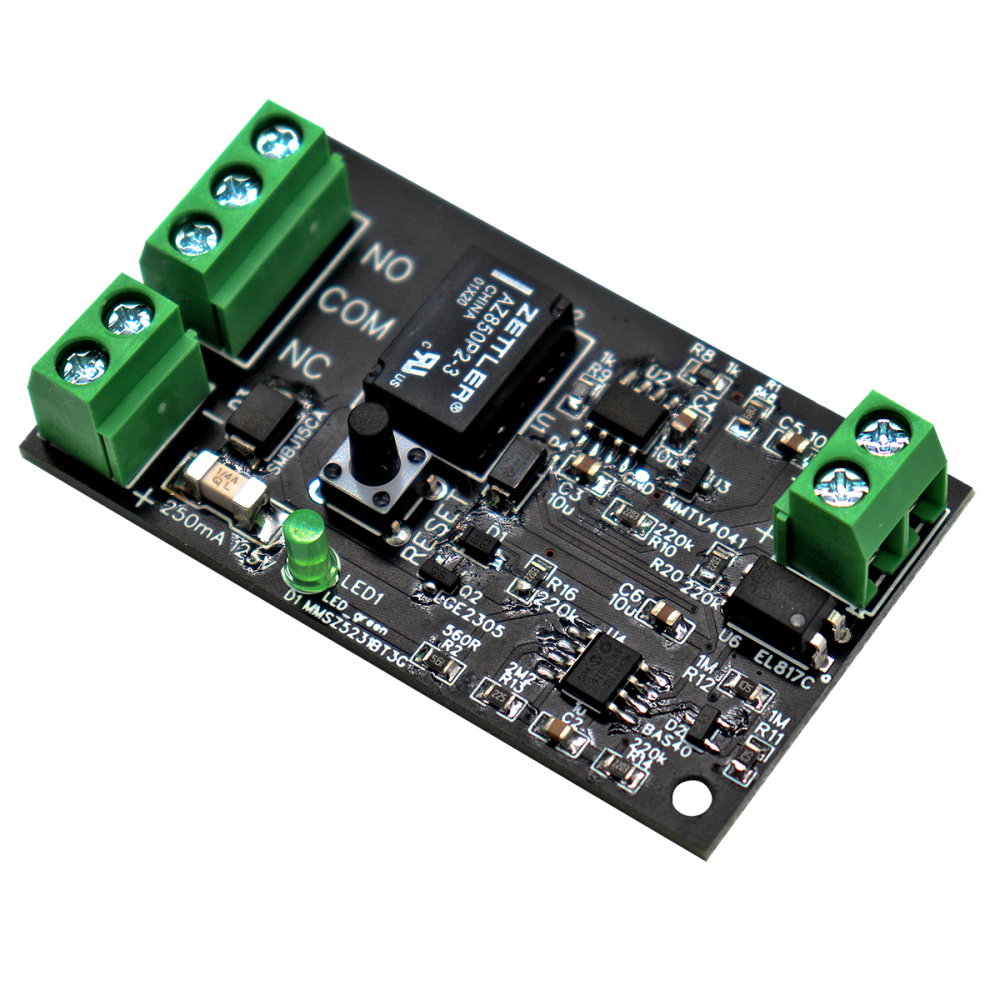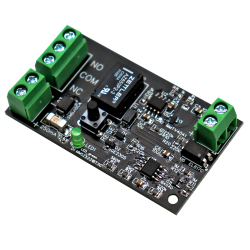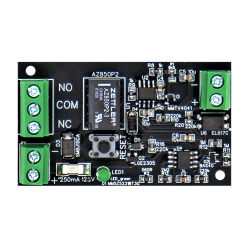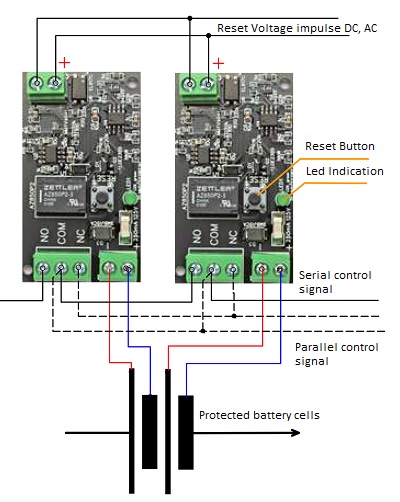BMS Easy - Single Cell Module for LiFePO4 cells protection
Manufacturer: GWL/Modular
Art.#:
BMS-EASY
Individual pricing for large scale projects and wholesale demands is available.
Contact us:
phone: +420 277 007 550
email: [email protected]
Contact us:
phone: +420 277 007 550
email: [email protected]
Shipping weight: 0.02 kg
Module for protection of individual LiFePO4 cells against overcharging and undercharging
Product description
The module is determinated for protection of individual LiFePO4 cells against overcharging and undercharging. The modules can be connected with battery cells to create basic protection for 12, 24, 48V systems etc.
Basic features
Function description
When the cell voltage is within the allowed range (2.6 V to 3.8 V), the module output relay is connected in the COM - NO and the signal LED flashes at an interval of approx. 3s. If the cell voltage drops or rises outside the permitted interval, the relay switches to the COM - NC position and the LED does not flash. At the same time, the module disconnects from the battery cell, i.e. it no longer discharges the battery by its own consumption.POSSIBILITIES OF USE
- without elements with software
Application - BASIC BATTERY PROTECTION - CIRCUIT BREAKER WITH VOLTAGE TRIGGER
One of the simplest single cell level battery protections with zero self-consumption, which also acts as any short-circuit protection and manual disconnection of the battery, e.g. during prolonged shutdown for a longer period of time of no operation. If the voltage on any battery cell drops below 2.6 V or rises above 3.8 V, the relay on the corresponding BMS unit switches to the NC position and the voltage trigger (coupled to the circuit breaker) trips the battery power output of the circuit breaker.
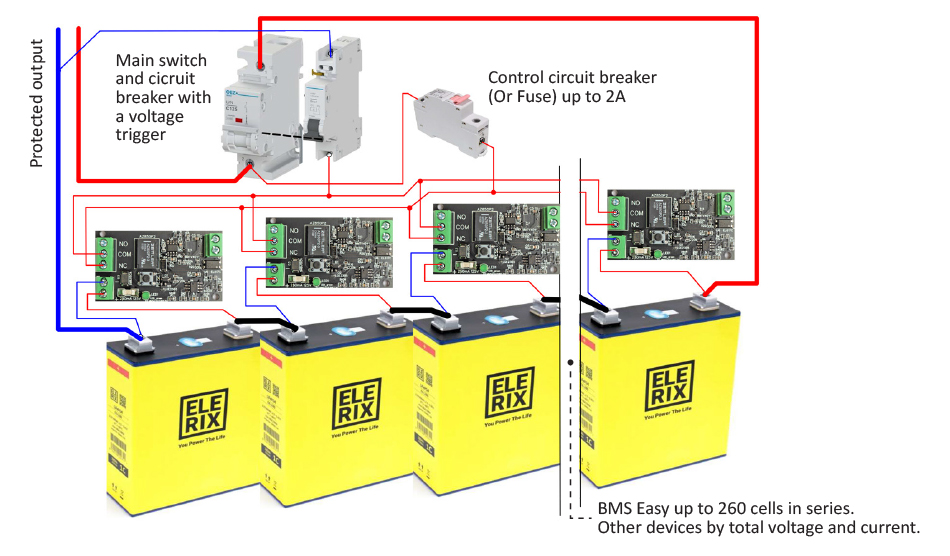
Application - BASIC BATTERY PROTECTION AND MONITORING - DC RELAY AND ENERGY MONITOR
Example of more complex battery management with operational and safety disconnector and condition monitoring. If the voltage on any battery cell drops below 2.6 V or rises above 3.8 V, a relay on the appropriate BMS unit is switched to the NC position and the BMS serial link circuit via COM - NO contacts connection is interrupted. The SS relay loses power and disconnects the power circuit. Safety and service galvanic disconnection of the battery is carried out by a central switch. The energy monitor allows to have an overview of the battery voltage, the direction of current flow and the capacity of the battery (SoC - State of Charge).
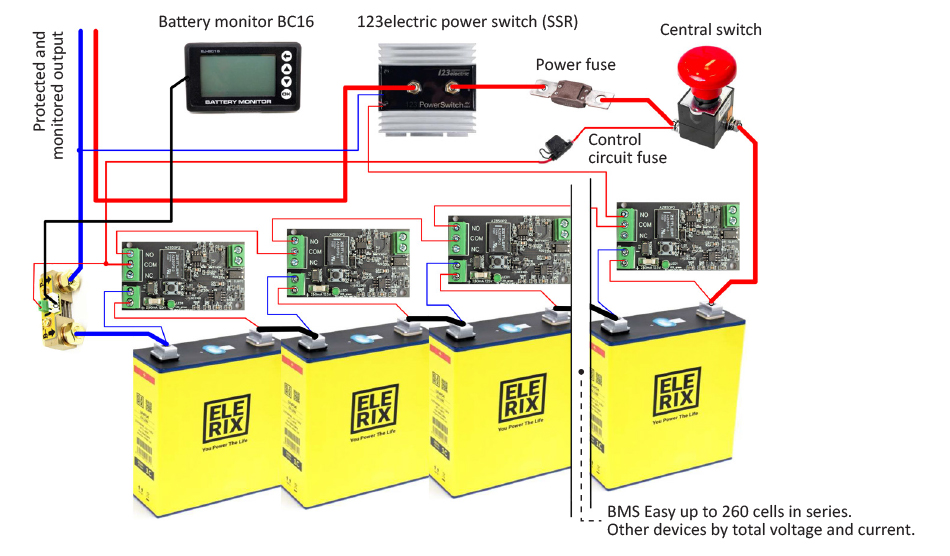
 | The complet datasheet with technical specification can be found in Documets for download. |
| Dimension (mm) | 60x35 |
| Weight (kg) | 0.015 |
No Related Products attached.
Product 10 / 64

 English
English Česká republika
Česká republika Germany
Germany France
France España
España Italia
Italia Sverige
Sverige Polski
Polski Nederland
Nederland